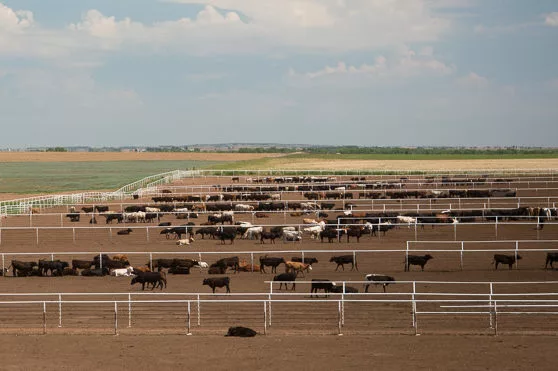“Say you were standing with one foot in the oven and one foot in an ice bucket. According to the percentage people, you should be perfectly comfortable.” – Bobby Bragan, Major league baseball coach
Anyone who has paid close attention to the issue of antibiotic resistance is no doubt familiar with the statement, “80 percent of the antibiotics used in the United States are given to animals raised for food.” Some have used it to suggest that antibiotics are overused in American animal agriculture. But, what does it really mean? A close look at the information available as well as some context tells a different story.
The “80 percent” statistic was derived from comparing national drug sales data in animals and humans. The Food and Drug Administration (FDA) says there are a number of differences in the circumstances in which antibiotics are used in human and veterinary medicine. On page nine of this 2015 FDA report, five specific differences are outlined. Among them, there simply are a lot more animals in the United States than there are people.
 There are around 319 million people in the U.S. compared to the more than 9 billion cattle, pigs, chickens, turkeys, ducks, sheep and other animals that produce food. It’s important to keep in mind that there are 30 times more animals to keep healthy. And, in many cases, animals are bigger too, so they need more medication than the average person.
There are around 319 million people in the U.S. compared to the more than 9 billion cattle, pigs, chickens, turkeys, ducks, sheep and other animals that produce food. It’s important to keep in mind that there are 30 times more animals to keep healthy. And, in many cases, animals are bigger too, so they need more medication than the average person.
But is the sheer weight of antibiotics sold in the U.S. relevant to the issue of antibiotic resistance? One needs to drill deeper into the numbers for some context.
We’ve talked a lot about antibiotics important to humans or medically important antibiotics – those classes of antibiotics that are used in both humans and animals. On page 17 of the same FDA report, you’ll see that federal officials say 38 percent of 2015 domestic animal sales are not antibiotics used in humans. Drilling deeper into sales of antibiotics that are important to humans, the FDA says most of the medically important antibiotics (71 percent) were tetracyclines, which are very lightly used (3.5 percent) in human medicine.
So, while tetracyclines are listed as important to human medicine, they aren’t used very much in people and therefore there is a lower risk of treatment failure from antibiotic resistance. Most people are probably more familiar with a drug like penicillin. Forty-four percent of antibiotics used in humans are penicillins compared to only 10 percent in animals.
The late Dr. Scott Hurd, a former Deputy Undersecretary for Food Safety at the U.S. Department of Agriculture, used 2011 meat industry statistics to develop another way of looking at the issue. He estimated that for every pound of meat produced in the U.S., only about 0.019 grams of antibiotics important to human medicine were used. By comparison, a grain of salt weighs more than three times that much. Just to be clear, this does not mean antibiotic residue remains in the meat. There are multiple safeguards in place to make sure that food is safe for our families to eat.
Animal health companies, farmers and veterinarians are all committed to using antibiotics responsibly to minimize agriculture’s contribution to antibiotic resistance. What is agriculture’s role in the issue? A report by the Centers for Disease Control sheds some light. The CDC identified the most concerning public health threats from antibiotic resistant bacteria. None of the most urgent threats have any relation to farm animals. On the broader CDC list, which includes less urgent threats, only two of 18 involve bacteria associated with farm animals. Still, we share the public concern and are actively engaged to be part of the solution.
It’s also important to note that the amount of antibiotics important to humans used in livestock will likely decrease due to the animal health community’s commitment to responsible use, including the new limitations on antibiotic use on farms. Animal health companies voluntarily instituted changes recommended by FDA, as I discussed in my Dec. 22, 2016, blog, New year brings changes: Farmers and veterinarians must work even closer together to use antibiotics responsibly.
The issue of antibiotic resistance is a big deal and we all recognize that antibiotics must be used responsibly. The responsible use of animal antibiotics benefits all of us by making food safer and more affordable. Let’s all work to keep the conversation on antibiotics in proper context and try to lessen consumer confusion on a complex issue.
I welcome your thoughts and questions. Please feel free to send me an email at AskDrDorman@pahc.com or call me at 844-288-3623. You can also browse our Resource Library to learn more about this important topic.
